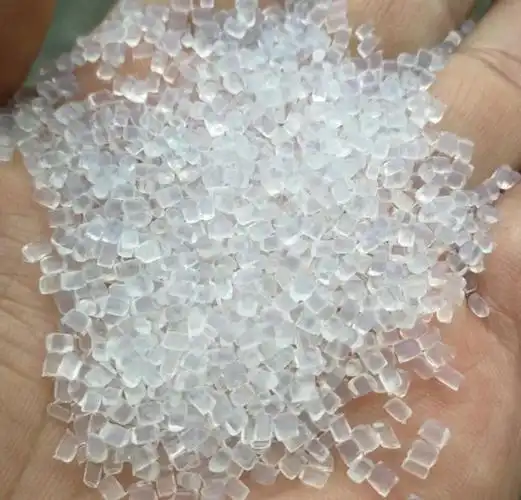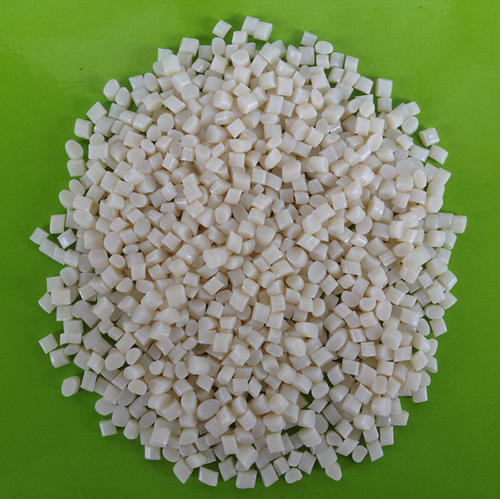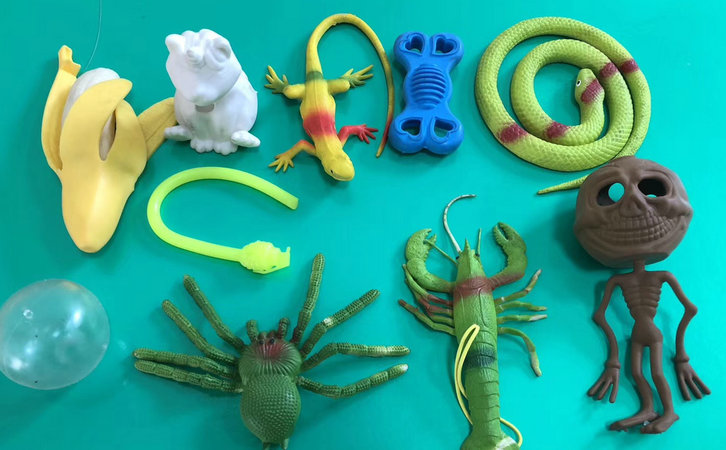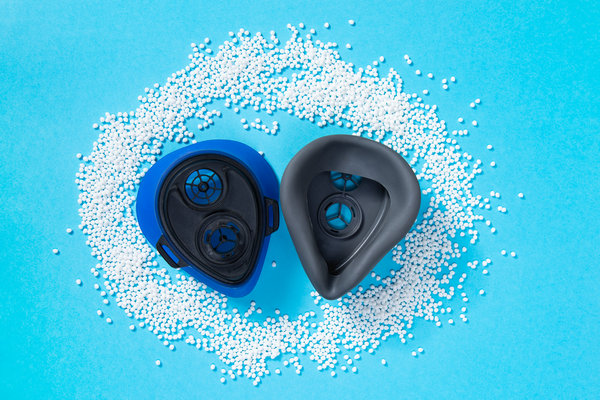As someone who’s been in the injection molding industry for over a decade, I’ve seen firsthand how the smallest tweaks in process parameters can make or break the quality of a product. When it comes to molding Thermoplastic Elastomers (TPE), one parameter that often flies under the radar but plays a pivotal role is backpressure. If you’re working with TPE and wondering why your parts have inconsistent dimensions, surface defects, or unexpected mechanical properties, backpressure might be the culprit—or the solution. In this article, I’ll walk you through what backpressure does, how it affects TPE products, and how to dial it in for optimal results. Let’s dive in and unpack this critical aspect of injection molding.

What Is Backpressure in Injection Molding?
Before we get into the nitty-gritty, let’s clarify what backpressure is. In injection molding, backpressure refers to the resistance applied to the screw as it rotates and pushes molten plastic toward the front of the barrel during the plasticizing phase. Think of it as the force that slows down the screw’s backward movement while the TPE pellets are melting and being compacted. This pressure isn’t just a random setting—it directly influences how the material behaves, how it fills the mold, and ultimately, the quality of the final part.
For TPE, a material known for its flexibility, softness, and elasticity, backpressure is especially important because TPE’s low viscosity and sensitivity to processing conditions demand precise control. Too much or too little backpressure can lead to a host of issues, from aesthetic flaws to compromised functionality. Let’s explore how backpressure impacts TPE products and why getting it right is worth the effort.
Why Backpressure Matters for TPE
TPEs are unique because they combine the elasticity of rubber with the processability of thermoplastics. They’re widely used in products like seals, grips, medical devices, and soft-touch components. But their low viscosity and sensitivity to heat and shear mean that small changes in processing conditions—like backpressure—can have outsized effects. Here’s a breakdown of how backpressure influences TPE injection molding products:
1. Melt Homogeneity and Material Consistency
One of the primary roles of backpressure is to ensure the TPE melt is uniform. When the screw rotates, it mixes and melts the TPE pellets. Backpressure compacts the molten material, bringing the polymer molecules closer together and promoting even mixing. This is critical for TPE because inconsistent melting can lead to variations in color, texture, or mechanical properties across the part.
Low Backpressure: If the backpressure is too low, the screw may retreat too quickly, resulting in a less dense melt with trapped air or unmelted pellets. This can cause defects like flow lines, splay, or voids in the final product. For TPE, which often requires a smooth, glossy finish for applications like consumer goods, these defects are a dealbreaker.
High Backpressure: On the flip side, excessive backpressure increases shear and heat, which can improve melt homogeneity but risks overheating the TPE. Overheating can degrade the material, leading to discoloration or loss of elasticity, which is particularly problematic for TPEs used in flexible or stretchy applications.

2. Dimensional Stability and Shrinkage
TPE parts are often designed for precise fitment, like seals or gaskets, where dimensional accuracy is non-negotiable. Backpressure plays a key role in controlling shrinkage and ensuring the part maintains its intended size and shape.
Low Backpressure: Insufficient backpressure can result in a less dense melt, which increases shrinkage as the part cools. This can lead to parts that are larger than intended or have sink marks, especially in thicker sections. For TPE, which is prone to isotropic shrinkage due to its molecular structure, this can compromise the part’s functionality.
High Backpressure: Higher backpressure compacts the melt, reducing the volume of trapped air and promoting more consistent shrinkage. This leads to better dimensional stability, which is critical for TPE parts that need to fit tightly or maintain specific tolerances.
3. Surface Quality and Aesthetic Defects
TPE is often chosen for its soft-touch feel and aesthetic appeal, especially in consumer products like phone cases or wearable devices. Backpressure directly affects the surface quality of the molded part.
Low Backpressure: When backpressure is too low, trapped air or inconsistent melt flow can cause bubbles, splay, or silver streaks on the surface. For transparent TPE parts, bubbles are particularly noticeable and can ruin the visual appeal. Even in non-transparent parts, internal voids can weaken the structure.
High Backpressure: Properly set backpressure helps expel trapped air and volatiles through the venting system, resulting in a smoother, defect-free surface. However, if backpressure is too high, it can lead to burn marks or discoloration due to excessive shear heating, especially in heat-sensitive TPE grades.

4. Mechanical Properties
The mechanical performance of TPE—its strength, flexibility, and elasticity—depends heavily on how the material is processed. Backpressure influences the molecular alignment and density of the melt, which in turn affects the part’s properties.
Low Backpressure: A less dense melt can result in parts with lower tensile strength or reduced elasticity, as the polymer chains may not be as tightly packed. This is a critical issue for TPEs used in applications like medical tubing or elastic bands, where consistent mechanical performance is essential.
High Backpressure: Adequate backpressure ensures better molecular packing, enhancing the part’s strength, stiffness, and impact resistance. However, excessive backpressure can overheat the material, degrading its molecular structure and reducing elasticity, which is a key feature of TPE.
5. Shot Size and Process Efficiency
Backpressure also affects the shot size—the volume of material injected into the mold. This is particularly important for TPE, where consistent shot size ensures repeatable part quality.
Low Backpressure: If the screw retreats too quickly, the shot size may be inconsistent, leading to short shots (incomplete filling of the mold) or variations in part weight. This can disrupt production efficiency and increase scrap rates.
High Backpressure: Higher backpressure increases the density of the melt, which can slightly increase the shot size. While this can help fill the mold more completely, excessive backpressure can lead to overpacking, causing flash or stress in the part, and may slow down the cycle time, reducing efficiency.
How to Set the Right Backpressure for TPE
Setting the optimal backpressure for TPE isn’t a one-size-fits-all process. It depends on the specific TPE grade, part design, mold complexity, and machine capabilities. Based on my experience, here’s a step-by-step guide to dialing in the right backpressure:
Start Low: Begin with a low backpressure setting, typically around 50–100 psi (3–7 bar) for TPE, and gradually increase it in increments of 10–50 psi. This allows you to observe the impact on part quality without risking material degradation.
Monitor Part Quality: Check the molded parts for defects like bubbles, splay, or sink marks. If you see these issues, increase backpressure slightly to improve melt density and expel trapped air. If you notice discoloration or burn marks, reduce backpressure to avoid overheating.

Consider Material Properties: TPE grades vary in viscosity and thermal sensitivity. For low-viscosity TPEs, lower backpressure is often sufficient to achieve good mixing and flow. For high-viscosity TPEs or those with additives like glass fibers, higher backpressure may be needed, but be cautious to avoid fiber breakage or degradation.
Account for Part Design: Complex parts with thin walls or long flow paths require higher backpressure to ensure complete mold filling. Simpler designs may tolerate lower backpressure without sacrificing quality.
Check Machine Capabilities: The screw design, barrel size, and drive system of your injection molding machine affect how backpressure is applied. For hydraulic machines, adjust the return throttle valve; for electric machines, tweak the servo settings. Ensure the machine can handle the required pressure without excessive wear.
Test and Optimize: Run trial shots and weigh them to check for consistency in shot size and part weight. Aim for a range of less than 0.5% variation in shot weight. Adjust backpressure until you achieve stable dimensions, smooth surfaces, and consistent mechanical properties.
Here’s a handy table summarizing the effects of backpressure on TPE products and recommended settings:
| Backpressure Level | Effect on TPE Product | Common Defects | Recommended Range |
|---|---|---|---|
| Low (50–100 psi) | Less dense melt, poor mixing, increased shrinkage | Bubbles, splay, voids, short shots | Suitable for low-viscosity TPEs, simple parts |
| Moderate (100–500 psi) | Improved melt homogeneity, better dimensional stability | Minimal defects if optimized | Ideal for most TPE grades and part designs |
| High (500–1000 psi) | Dense melt, enhanced mechanical properties | Discoloration, burn marks, fiber breakage | Use for high-viscosity TPEs or complex parts |
| Excessive (>1000 psi) | Overheating, material degradation, increased cycle time | Burn marks, flash, reduced elasticity | Avoid unless necessary for specific materials |
Real-World Example: Solving a TPE Part Issue
Let me share a story from my early days in the industry. We were molding TPE grips for a consumer electronics product, and the client was frustrated with inconsistent surface texture and occasional bubbles in transparent parts. Initially, we were running with a backpressure of around 80 psi, thinking it was safe for the low-viscosity TPE grade. But the parts kept showing splay and slight dimensional variations, which was a problem for the tight tolerances required.
After some trial and error, we increased the backpressure to 200 psi and adjusted the screw speed to maintain consistent melt temperature. The results were night and day—smoother surfaces, no bubbles, and parts that met the client’s specs. The key was finding the sweet spot where the melt was dense enough to fill the mold uniformly without overheating the material. This experience taught me that backpressure isn’t just a number on the machine; it’s a lever for fine-tuning quality.

Common Mistakes and How to Avoid Them
Over the years, I’ve seen a few recurring mistakes when it comes to setting backpressure for TPE:
Ignoring Material Guidelines: Always check the TPE manufacturer’s datasheet for recommended backpressure settings. For example, some TPEs with glass fiber additives require lower backpressure to avoid fiber breakage, while others need higher pressure for proper mixing.
Overcompensating for Defects: If you see splay or short shots, don’t just crank up the backpressure without investigating other factors like melt temperature or screw speed. Overdoing it can lead to degradation or excessive wear on the machine.
Neglecting Machine Maintenance: Worn screws or barrels can affect how backpressure is applied. Regularly inspect your equipment to ensure consistent performance.
Not Testing Enough: Always run multiple trial shots and measure part weight, dimensions, and surface quality. Don’t assume one setting will work for every batch or mold.
Advanced Considerations for TPE Backpressure
For those of you with more experience, here are a few advanced tips to take your TPE molding to the next level:
Foam Injection Molding: If you’re working with TPE in foam injection molding, backpressure is even more critical. Research shows that optimizing backpressure can increase plasticizing capacity by up to 45% and reduce energy consumption by 24%. This is because proper backpressure ensures the polymer-gas mixture remains homogeneous, preventing undissolved gas phases that can lead to defects.
Filled TPEs: For TPEs with fillers like glass fibers, high backpressure can reduce fiber length, which weakens the part’s mechanical properties. Always balance backpressure with the need to preserve filler integrity.
Color Changes and Purging: During color changes, backpressure helps keep the screw on “bottom” while purging, ensuring old colorants are fully removed. This is especially useful for TPE, where color consistency is often critical for aesthetic applications.

Wrapping It Up
After years of tweaking machines and troubleshooting part defects, I can tell you that backpressure is one of those settings that seems minor but can make a world of difference in TPE injection molding. It’s the key to achieving a uniform melt, controlling shrinkage, ensuring smooth surfaces, and maintaining the mechanical properties that make TPE such a versatile material. By starting with a low backpressure, monitoring part quality, and fine-tuning based on material and part requirements, you can avoid common pitfalls and produce high-quality TPE products consistently.
If you’re struggling with TPE parts that aren’t meeting expectations, take a close look at your backpressure settings. A few small adjustments could be the difference between scrapped parts and a happy client. And if you’re ever in doubt, don’t hesitate to consult your material supplier or an experienced molder—they’ve likely seen it all before.
Related Questions and Answers
Q: What’s the typical backpressure range for TPE injection molding?
A: For most TPE grades, backpressure ranges from 50 to 500 psi (3–35 bar). Low-viscosity TPEs may need only 50–100 psi, while high-viscosity or filled TPEs might require 200–500 psi. Always check the material datasheet and adjust based on part quality.
Q: How do I know if my backpressure is too high?
A: Signs of excessive backpressure include discoloration, burn marks, or reduced elasticity in the part. You may also notice longer cycle times or increased wear on the screw and barrel. Reduce backpressure in small increments and monitor part quality.
Q: Can backpressure affect cycle time in TPE molding?
A: Yes, higher backpressure can slow down screw recovery, increasing cycle time. If efficiency is a priority, optimize backpressure to balance quality and speed, typically keeping it in the 100–500 psi range for TPE.
Q: What if I’m seeing bubbles in my TPE parts?
A: Bubbles often indicate trapped air or insufficient melt density. Try increasing backpressure by 10–50 psi to improve compaction and venting. Also, check your melt temperature and drying conditions, as moisture can contribute to bubbles.
Q: Does backpressure affect TPE color consistency?
A: Absolutely. Proper backpressure ensures thorough mixing of colorants, leading to uniform color across the part. Low backpressure can result in uneven color or streaks, especially in transparent or brightly colored TPEs.





